DEIXAR-SER
1986 – Present. Paint. Variable canvas and sizes.


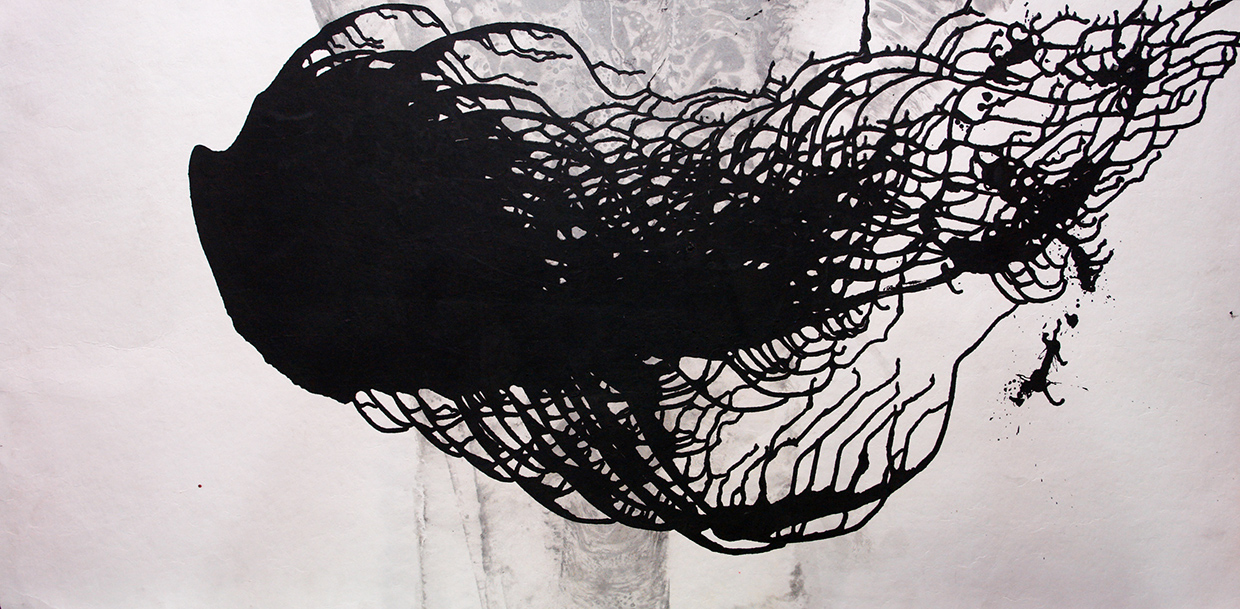
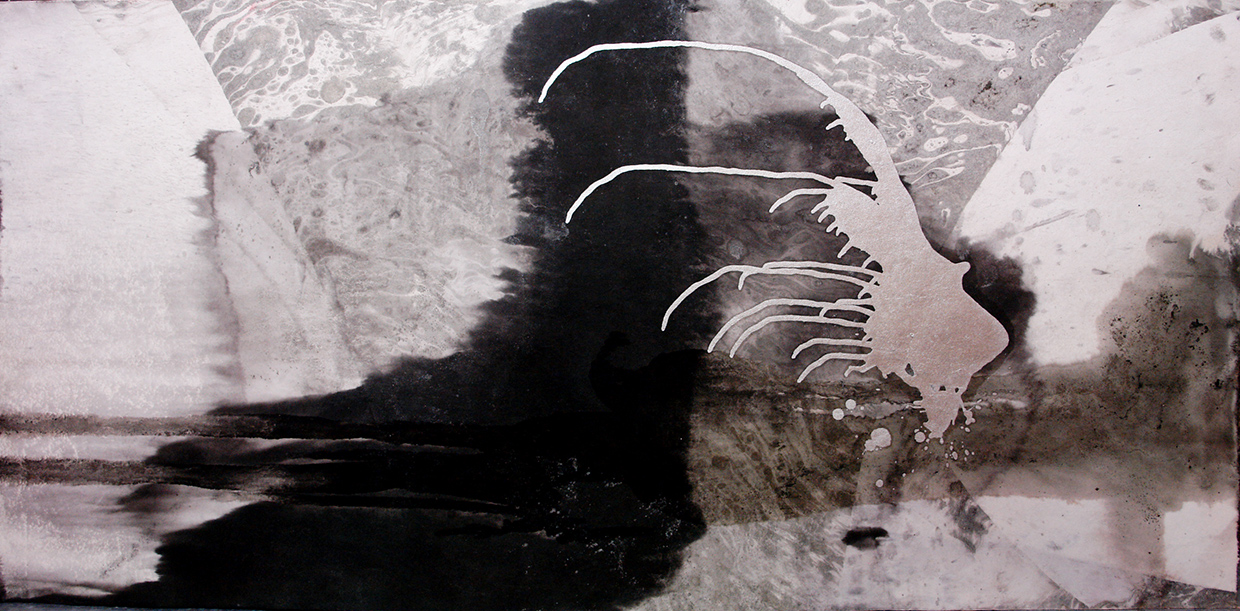







![1/13]()
![2/13]()
![3/13]()
![4/13]()
![5/13]()
![6/13]()
![7/13]()
![8/13]()
![9/13]()
![10/13]()
![11/13]()
![12/13]()
![13/13]() (CAT)
(CAT)
PINTURES A QUATRE (SENSE) MANS
Per tots dos, la pintura és la nostra llengua materna. Els nostres orígens artístics són a la dècada de 1980, i lògicament són pictòrics. La pintura és en nosaltres una activitat continuada, en l’ombra del que fem, en un àmbit més reservat i íntim. Un àmbit en el que deixem fluir de manera molt processual, sense full de ruta, imatges que emergeixen en la tensió entre la construcció i l’accident. Concebent la Pintura com a protollenguatge, com a veu, quelcom anterior al llenguatge articulat. La majoria de vegades fem néixer les pintures del caos i l’accident, per tal de trencar diagrames apresos i crear-ne de nous. D’altres és a l’inrevés, partim de la mà que traça i construeix, per a sotmetre després la pintura a mutacions provocades per la resposta dels materials (rentats, decantacions, empremtes, banys...)
D’uns anys ençà, les nostres pintures tenen poc pinzell; i quan el tenen, s’ha actuat des d’una actitud molt zen, deixant-se portar pel temps Kairós, un moment present que és l’oportú, concebent el traç des de la seva pròpia energia, i fent intervenir la respiració, sense retoc... Això comporta una actitud de respecte, escolta i receptivitat. La imatge és perquè se l’ha deixat ser, sense argumentació, sense re-presentació, ni re-creació, ni tan sols inspiració; més aviat: presentació, emergència i creació. Es tracta d’un flux del propi fenomen pictòric en el qual intervenen múltiples factors de pressió, sense un objecte situat fora de nosaltres, ni dins, que ens inspiri.
La pintura l’entenen així, com a via de coneixement, mostrant sense resoldre, emergint des d’un imaginari plàstic molt profund i des de la mateixa acció de pintar. És el moment del fenomen, del qual formem part com a elements actius, com a vehicles; però el que neix no és un resultat ni una plasmació, ni la materialització de l’immaterial, ni una visualització de l’invisible. Aquest és el mètode de treball que cerquem: la tensió que genera el difícil i atractiu punt entre logos i pathos, que finalment genera la commoció poètica que ens els motiva a seguir pintant. Perquè per nosaltres ells la pintura és una forma més de poesia, la poesia que ja practicàvem de petits, molt abans de decidir-nos a orientar els nostres estudis, molt abans de conèixer-nos i constituir-nos com a parella artística: la llengua materna.
Deixar-ser és un joc de paraules “deixar” i “ser” que unides d’aquesta manera ressonen creant el verb “deixar ser”, però connectades pel guió fan referència al concepte de Heidegger (en alemany seinlassen) del ser que és en tant que deixa i es deixa; el ser que es desenvolupa en l’abandonar i l’abandonar-se. I perquè deixar-ser i la pintura? Perquè hem trobat en aquest deixar-ser la millor expressió del que experimentem quan pintem.
DEIXAR-SER
El ser es transcendeix en l’acte pictòric;
acte de deixar ser a la pulsió vital
que es desenvolupa per inèrcia pròpia;
deixa que prengui forma l’immaterial
en la matèria d’un llenguatge
que el conté sense limitar-lo.
L’observador ha de deixar ser
a la pintura en ell;
ha de deixar-se transcendir
des de la matèria a la no matèria;
a l’inabastable d’allò que és
però no reflexa ni es pot traduir.
És en la mirada de cada observador;
i aquí l’artista és també observador,
on finalitza l’acte pictòric.
(Gerard Asunción Guasch)
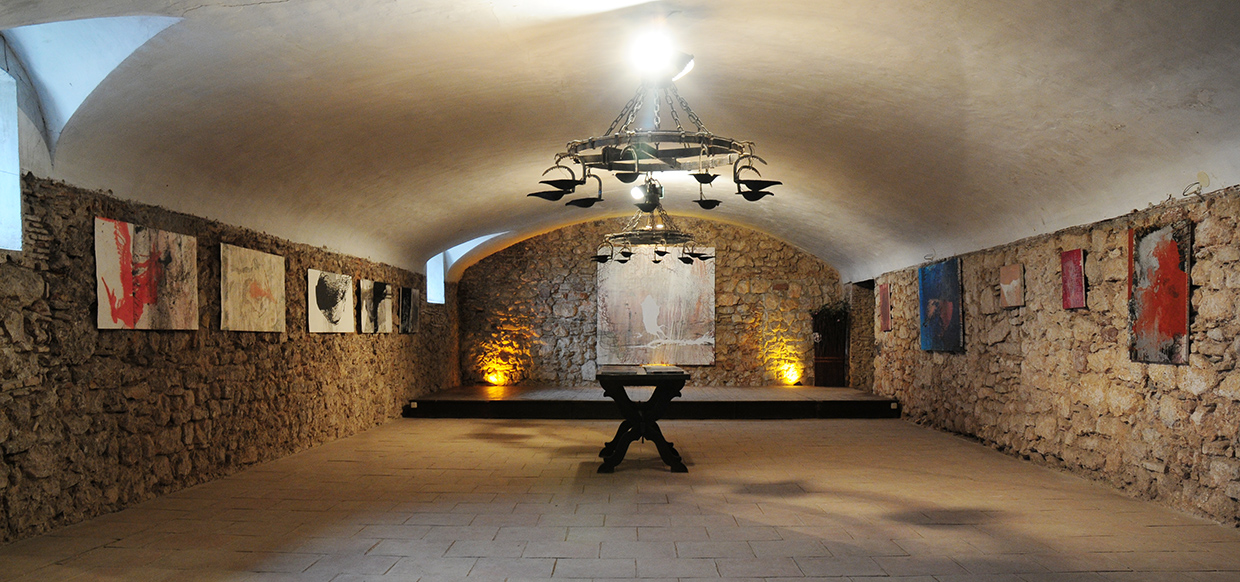


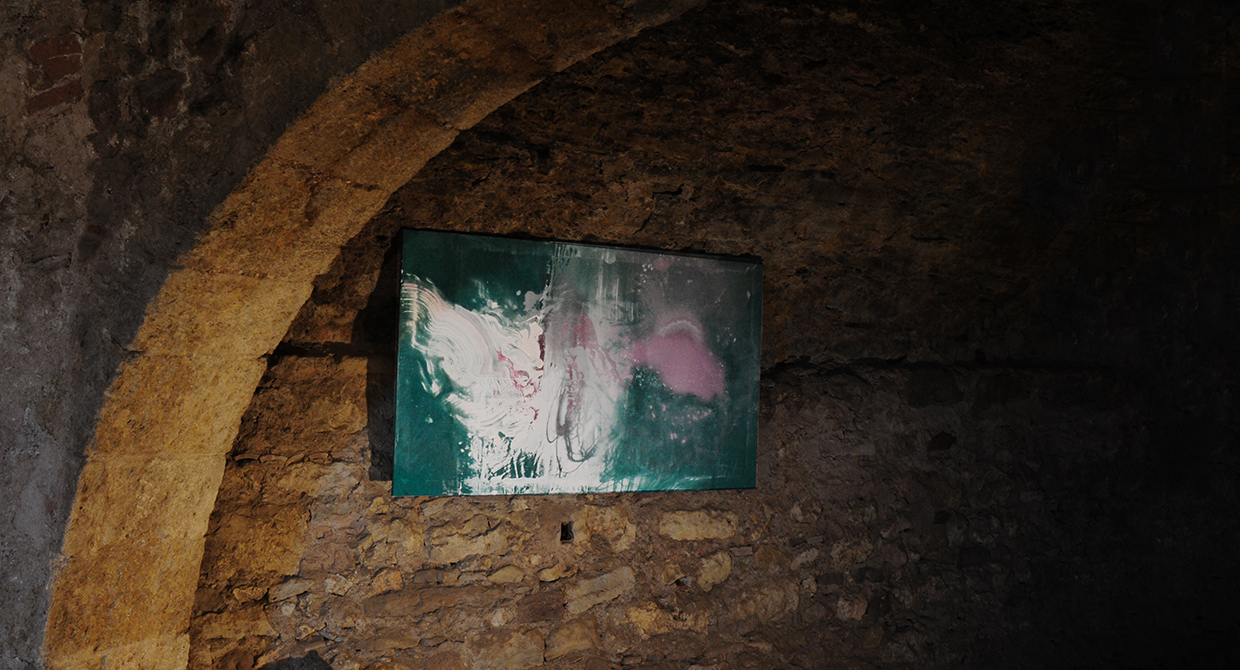
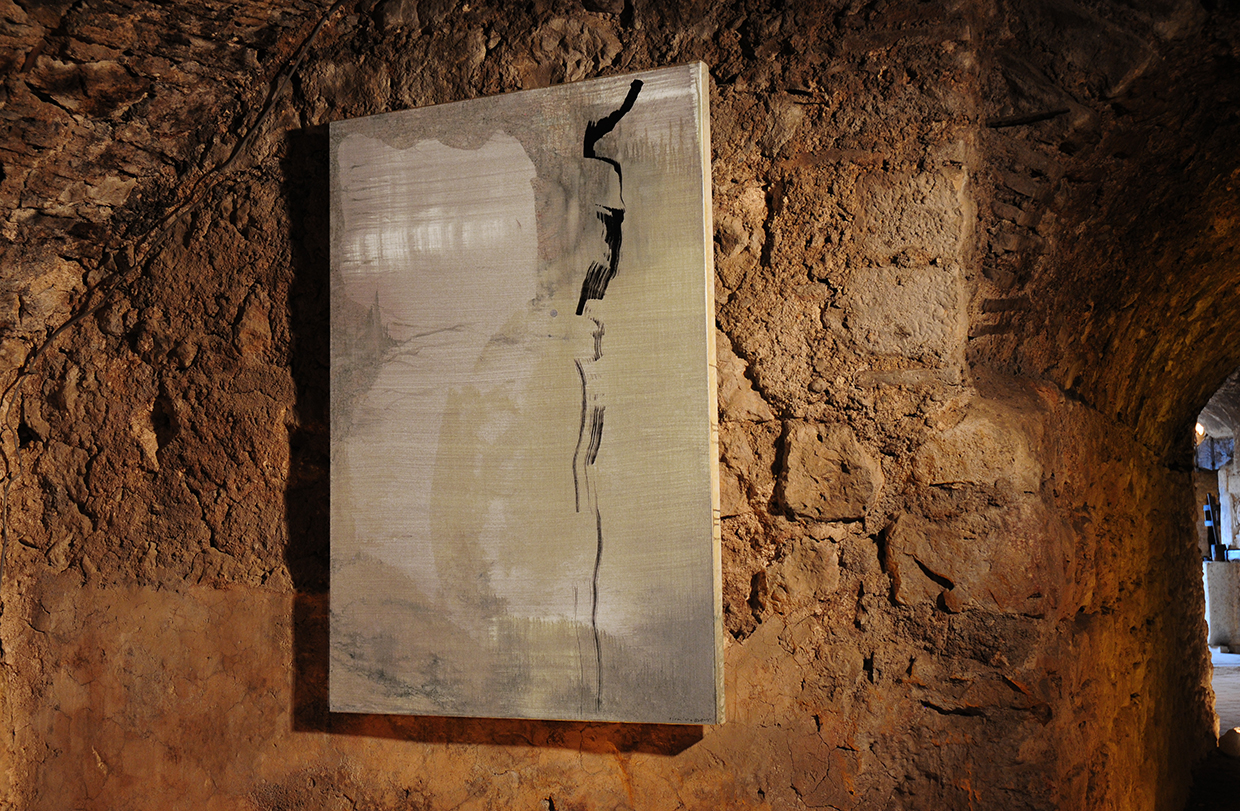

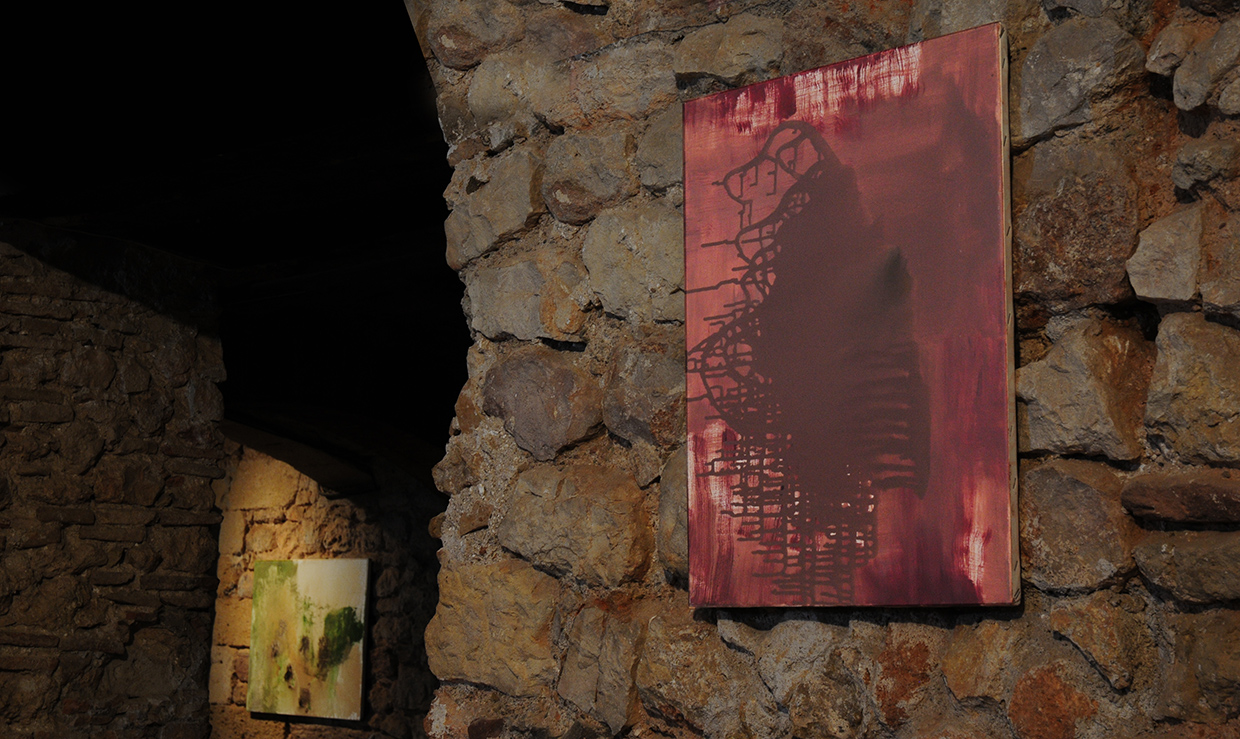
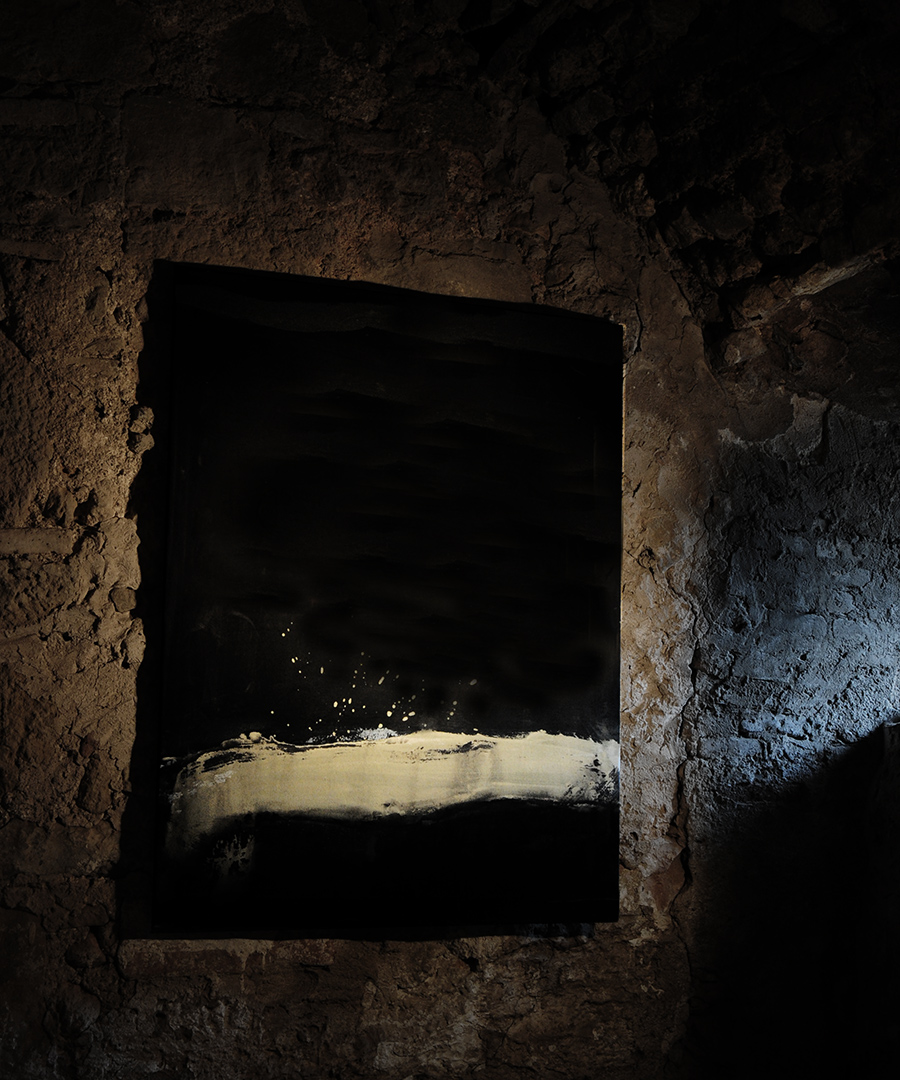

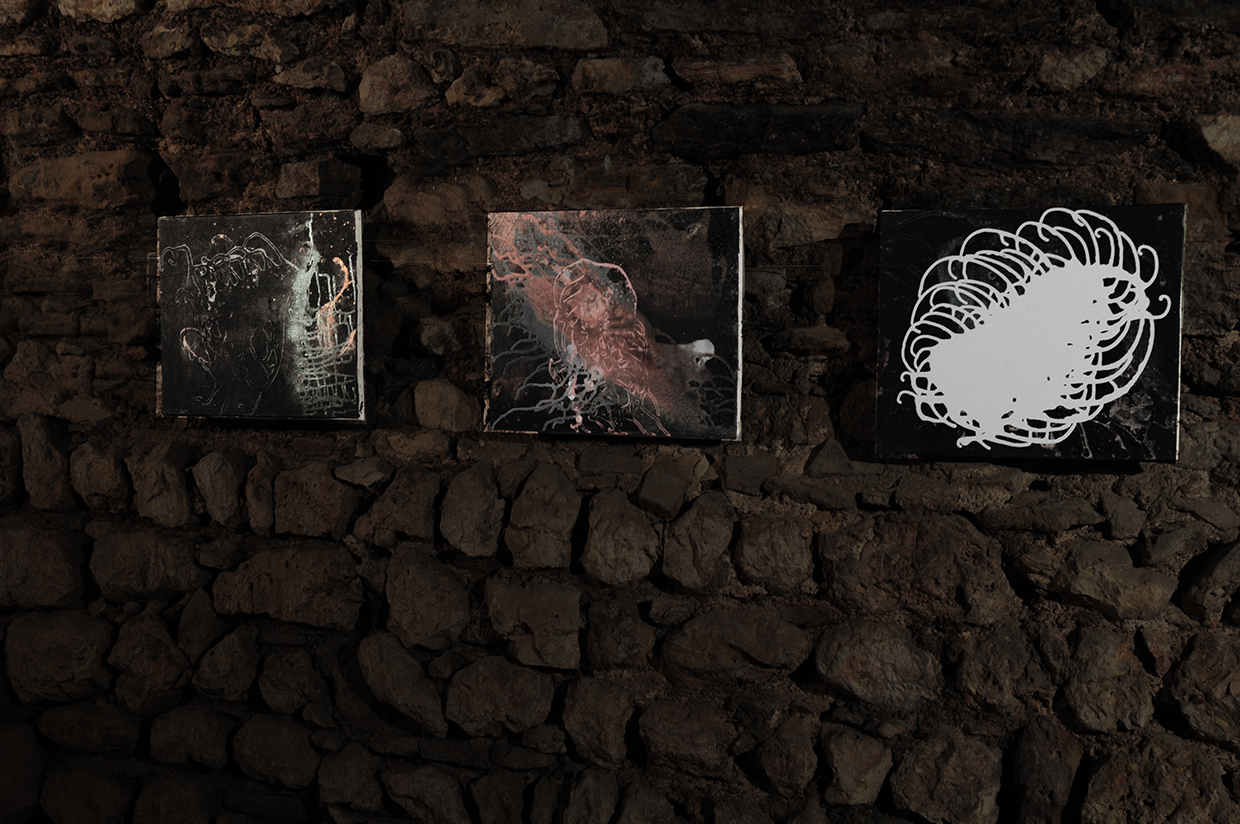



(ESP)
PINTURAS A CUATRO (SIN) MANOS
Para ambos la pintura es nuestra lengua materna. Nuestros orígenes artísticos están en la década de 1980 y, lógicamente, son pictóricos. La pintura es en nosotros una actividad continuada, pero en la sombra, en un ámbito más reservado e íntimo. Un ámbito en el que dejamos que fluyan de manera muy procesual, sin rumbo, imágenes que emergen en la tensión entre la construcción y el accidente. Concibiendo la Pintura como protolenguaje, como voz, algo anterior al lenguaje articulado. La mayoría de veces hacemos nacer las pinturas del caos y el accidente, para romper diagramas aprendidos y crear nuevos. En otros, es al revés, partimos de la mano que traza y construye, para someter después la pintura a mutaciones provocadas por la respuesta de los materiales (lavados, decantaciones, huellas, baños…)
Desde hace unos años, nuestras pinturas tienen poco pincel; y cuando lo tienen, se ha actuado desde una actitud muy zen, dejándonos llevar por el tiempo Kairós, un momento que es “presente” que es el “oportuno”, concibiendo el trazo desde su propia energía, y haciendo intervenir la respiración, sin retoque… Esto comporta una actitud de respeto, escucha y receptividad. La imagen es porque se la ha dejado ser, sin argumentación, sin re-presentación, ni re-creación, ni siquiera inspiración; más bien: presentación, emergencia y creación. Se trata de un flujo del propio fenómeno pictórico en el cual intervienen múltiples factores de presión, sin un objeto situado fuera de nosotros, ni dentro, que nos inspire.
La pintura la entiendemos así, como vía de conocimiento, mostrando sin resolver, emergiendo desde un imaginario plástico muy profundo y desde la misma acción de pintar. Es el momento del fenómeno, del cual formamos parte como elementos activos, como vehículos; pero lo que nace no es un resultado ni una plasmación, ni la materialización de lo inmaterial, ni una visualización de lo invisible. Este es el método de trabajo que buscamos: la tensión que genera el difícil y atractivo punto entre logos y pathos, que finalmente genera la conmoción poética que nos motiva a seguir pintando. Porque para nosotros la pintura es una forma más de poesía, la poesía que ya practicaban de pequeños, mucho antes de decidirse a orientar sus estudios, mucho antes de conocerse y construirse como pareja artística: nuestra lengua materna.
Dejar-ser es un juego de palabras “dejar” y “ser” que unidas de esta manera resuenan creando el verbo “dejar ser”, pero conectadas por el guion hacen referencia al concepto de Heidegger (en alemán seinlassen) del ser que es en tanto que deja y se deja; el ser que se desarrolla en el abandonar y el abandonarse. ¿Y porque dejar-ser y la pintura? Porque hemos encontrado en este dejar-ser la mejor expresión de lo que experimentamos cuando pintamos.
DEJAR-SER
El ser se trasciende en el acto pictórico;
acto de dejar ser en la pulsión vital
que se desarrolla por inercia propia;
deja que tome forma lo inmaterial
en la materia de un lenguaje
que lo contiene sin limitarlo.
El observador tiene que dejar ser
a la pintura en él;
tiene que dejarse trascender
desde la materia a la no materia;
a lo inalcanzable de aquello que es
pero no refleja ni se puede traducir.
Está en la mirada de cada observador;
y aquí el artista es también observador,
donde concluye el acto pictórico.
(Gerard Asunción Guasch)
PINTURAS A CUATRO (SIN) MANOS
Para ambos la pintura es nuestra lengua materna. Nuestros orígenes artísticos están en la década de 1980 y, lógicamente, son pictóricos. La pintura es en nosotros una actividad continuada, pero en la sombra, en un ámbito más reservado e íntimo. Un ámbito en el que dejamos que fluyan de manera muy procesual, sin rumbo, imágenes que emergen en la tensión entre la construcción y el accidente. Concibiendo la Pintura como protolenguaje, como voz, algo anterior al lenguaje articulado. La mayoría de veces hacemos nacer las pinturas del caos y el accidente, para romper diagramas aprendidos y crear nuevos. En otros, es al revés, partimos de la mano que traza y construye, para someter después la pintura a mutaciones provocadas por la respuesta de los materiales (lavados, decantaciones, huellas, baños…)
Desde hace unos años, nuestras pinturas tienen poco pincel; y cuando lo tienen, se ha actuado desde una actitud muy zen, dejándonos llevar por el tiempo Kairós, un momento que es “presente” que es el “oportuno”, concibiendo el trazo desde su propia energía, y haciendo intervenir la respiración, sin retoque… Esto comporta una actitud de respeto, escucha y receptividad. La imagen es porque se la ha dejado ser, sin argumentación, sin re-presentación, ni re-creación, ni siquiera inspiración; más bien: presentación, emergencia y creación. Se trata de un flujo del propio fenómeno pictórico en el cual intervienen múltiples factores de presión, sin un objeto situado fuera de nosotros, ni dentro, que nos inspire.
La pintura la entiendemos así, como vía de conocimiento, mostrando sin resolver, emergiendo desde un imaginario plástico muy profundo y desde la misma acción de pintar. Es el momento del fenómeno, del cual formamos parte como elementos activos, como vehículos; pero lo que nace no es un resultado ni una plasmación, ni la materialización de lo inmaterial, ni una visualización de lo invisible. Este es el método de trabajo que buscamos: la tensión que genera el difícil y atractivo punto entre logos y pathos, que finalmente genera la conmoción poética que nos motiva a seguir pintando. Porque para nosotros la pintura es una forma más de poesía, la poesía que ya practicaban de pequeños, mucho antes de decidirse a orientar sus estudios, mucho antes de conocerse y construirse como pareja artística: nuestra lengua materna.
Dejar-ser es un juego de palabras “dejar” y “ser” que unidas de esta manera resuenan creando el verbo “dejar ser”, pero conectadas por el guion hacen referencia al concepto de Heidegger (en alemán seinlassen) del ser que es en tanto que deja y se deja; el ser que se desarrolla en el abandonar y el abandonarse. ¿Y porque dejar-ser y la pintura? Porque hemos encontrado en este dejar-ser la mejor expresión de lo que experimentamos cuando pintamos.
DEJAR-SER
El ser se trasciende en el acto pictórico;
acto de dejar ser en la pulsión vital
que se desarrolla por inercia propia;
deja que tome forma lo inmaterial
en la materia de un lenguaje
que lo contiene sin limitarlo.
El observador tiene que dejar ser
a la pintura en él;
tiene que dejarse trascender
desde la materia a la no materia;
a lo inalcanzable de aquello que es
pero no refleja ni se puede traducir.
Está en la mirada de cada observador;
y aquí el artista es también observador,
donde concluye el acto pictórico.
(Gerard Asunción Guasch)
(ENG)
PAINTINGS WITH FOUR (WITHOUT) HANDS
For both painting is our mother tongue. Our artistic origins start in the decade of the eighties, and are logically pictorial. Painting is a continuous act, in the shadow of what we do, in a reserved and intimate area. An area in which we allow a procedural flow, without maps, of images that emerge in the tension between construction and accident. Conceiving Painting as a protolanguage, like a voice, something previous to articulated language. The majority of times we make paintings from chaos and accident, to break learned diagrams and create new ones. Other times it’s the opposite, we work from the hand that traces and constructs, to submit the paint afterwards to mutations provoked by the reaction of the materials (washes, decantation, imprints, baths…).
In the past years, our paintings have very little brushstroke; and when they do, it has been used in a very Zen attitude, being carried by the Kairos, a present moment that is opportune, conceiving the stroke from their own energy, and making their respiration intervene, without modification… This results in an attitude of respect, listening and receptivity. The image is because it has been allowed to be, without argumentation, without re-presentation, or re-creation, or even inspiration; rather: presentation, emergency and creation. It addresses a flux of the pictorial phenomenon in which multiple factors of pressure intervene, without an object situated outside, or inside, that inspire us.
This is the way we understand painting, as a way of knowledge, showing without solving, emerging from a very profound plastic imaginary and from the action of painting. It is the moment of the phenomenon, which we are a part of as active elements, as vehicles; but what is born is not a result or a copy, nor is it materialization of the immaterial, nor a visualization of the invisible. This is the work method that we aspire: the tension that generates the difficult and attractive point between logos and pathos that finally generates the poetic commotion that motivates us to continue painting. Because for us painting is another form of poetry, poetry that we already practiced when young, long before deciding to orientate our studies, long before meeting each other and becoming an artistic couple: the mother tongue.
Deixar-ser (Let-be) is a play on the words deixar (to let) and ser (to be) that united in this way resound creating the verb “let be” (deixar ser), but connected by the hyphen becomes a reference to Heidegger (in German seinlassen) of the being that lets and lets itself; the being that evolves on abandoning and abandoning itself. And why let-be and the painting? Because we have found that this let-be is the best expression of what we experience when painting.
LET-BE (DEIXAR-SER)
The being transcends in the pictorial act;
the act of letting be in the vital urge
that develops by inertia;
let the immaterial take form
in the material of a language
that contains it without limiting it.
The observer has to let
the painting be in him;
he has to let himself transcend
from matter to no-matter;
to the unreachable that is
but doesn’t reflect and cannot be translated.
It is in the gaze of each observer;
and here the artist is also the observer,
where the pictorial act ends.
(Gerard Asunción Guasch)
PAINTINGS WITH FOUR (WITHOUT) HANDS
For both painting is our mother tongue. Our artistic origins start in the decade of the eighties, and are logically pictorial. Painting is a continuous act, in the shadow of what we do, in a reserved and intimate area. An area in which we allow a procedural flow, without maps, of images that emerge in the tension between construction and accident. Conceiving Painting as a protolanguage, like a voice, something previous to articulated language. The majority of times we make paintings from chaos and accident, to break learned diagrams and create new ones. Other times it’s the opposite, we work from the hand that traces and constructs, to submit the paint afterwards to mutations provoked by the reaction of the materials (washes, decantation, imprints, baths…).
In the past years, our paintings have very little brushstroke; and when they do, it has been used in a very Zen attitude, being carried by the Kairos, a present moment that is opportune, conceiving the stroke from their own energy, and making their respiration intervene, without modification… This results in an attitude of respect, listening and receptivity. The image is because it has been allowed to be, without argumentation, without re-presentation, or re-creation, or even inspiration; rather: presentation, emergency and creation. It addresses a flux of the pictorial phenomenon in which multiple factors of pressure intervene, without an object situated outside, or inside, that inspire us.
This is the way we understand painting, as a way of knowledge, showing without solving, emerging from a very profound plastic imaginary and from the action of painting. It is the moment of the phenomenon, which we are a part of as active elements, as vehicles; but what is born is not a result or a copy, nor is it materialization of the immaterial, nor a visualization of the invisible. This is the work method that we aspire: the tension that generates the difficult and attractive point between logos and pathos that finally generates the poetic commotion that motivates us to continue painting. Because for us painting is another form of poetry, poetry that we already practiced when young, long before deciding to orientate our studies, long before meeting each other and becoming an artistic couple: the mother tongue.
Deixar-ser (Let-be) is a play on the words deixar (to let) and ser (to be) that united in this way resound creating the verb “let be” (deixar ser), but connected by the hyphen becomes a reference to Heidegger (in German seinlassen) of the being that lets and lets itself; the being that evolves on abandoning and abandoning itself. And why let-be and the painting? Because we have found that this let-be is the best expression of what we experience when painting.
LET-BE (DEIXAR-SER)
The being transcends in the pictorial act;
the act of letting be in the vital urge
that develops by inertia;
let the immaterial take form
in the material of a language
that contains it without limiting it.
The observer has to let
the painting be in him;
he has to let himself transcend
from matter to no-matter;
to the unreachable that is
but doesn’t reflect and cannot be translated.
It is in the gaze of each observer;
and here the artist is also the observer,
where the pictorial act ends.
(Gerard Asunción Guasch)